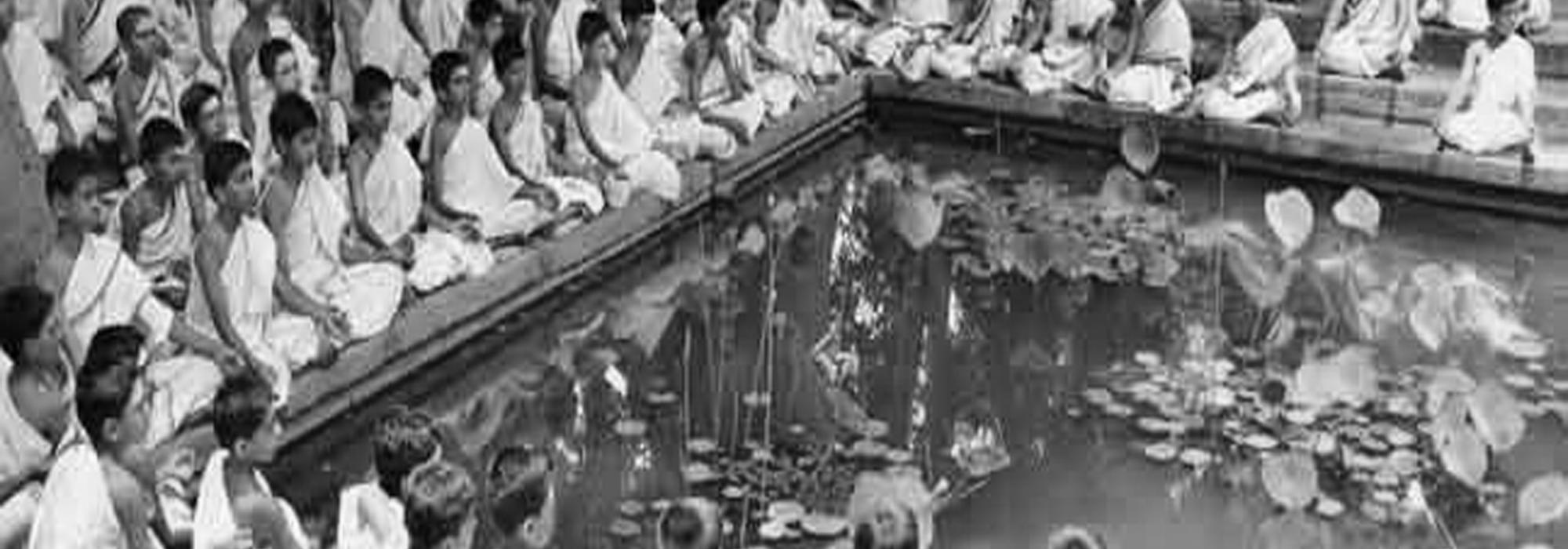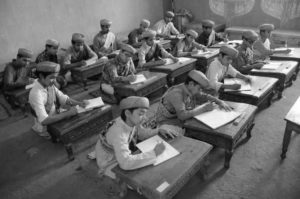In 1957, the Central Government constituted a commission under the leadership of renowned linguist Dr. Suniti Kumar Chatterji. Great scholars like Dr. V Raghavan, Panditaraja V S Ramachandra Shastri, and Prof. S K De were its members. The findings of mega report – comprising more than three hundred pages prepared by the committee after travelling to the nooks and corners of the country for a year, consulting hundreds of institutions and thousands of scholars, and researching the data – would surprise even a hater of Sanskrit, and he would melt.
The report says that across India it was found that all—including the innocent and the ignorant—people have deep love towards Sanskrit; their respect borders on worship. They have unknowingly inculcated the values of the Vedic culture. This is the truth even today, which has been experienced in my travel or by my friends while they have toured India.
It is said, “भारतस्य प्रतिष्ठे द्वे संस्कृतं संस्कृतिस्तथा इति” – “The pride of India is twofold: Sanskrit (saṃskṛta) and Culture (saṃskṛti).” This may appear to be a bold statement but every word of it is true.
The Kannada litterateur B. M. Srikantaiah had once made a taunt by saying that culture (saṃskṛti) was not the wife of Sanskrit (saṃskṛta). But it is true; several aspects hidden in Sanskrit represent principles of the whole of Indian culture. No regional language or culture is an exception for this. Not only that, the recent word-coinages of sociologists and leftists like ‘sub-culture’ (upa-saṃskṛti), alternative culture (prati-saṃskṛti), subaltern culture (yajamānādhīna-saṃskṛti), etc. are essentially rooted in Sanskrit, both in philosophy and practice. I can declare thus and present a mountain of evidence at any time, in front of any audience. Again, this confidence of mine arises from Sanskrit alone. I believe that there are thousands like me who think and have faith in the same manner.
Long ago Gandhi had said Karnataka belongs to Kannadigas, Gujarat to Gujaratis and Bengal to Bengalis; whom should Bhārata belong to? In a similar vein, if all the regional languages belong to those regions or states, to whom should Sanskrit belong? Some may say that it does not and need not belong to anyone. But in reality Sanskrit belongs to India. The concept India as a nation is incomplete without Sanskrit. Incidentally, Gandhi also said, “Without the study of Sanskrit one cannot become a true Indian and a true learned man.”
Even a person like Nehru, who was known for his Westernized mind and lifestyle, has said, “If I was asked what is the greatest treasure which India possesses and what is her finest heritage, I would answer unhesitatingly that it is the Samskrit [sic] language and literature and all that it contains. This is a magnificent inheritance and so long as this endures and influences the life of our people, so long will the basic genius of India continue.”
Many people do not know that in 1949 Dr B R Ambedkar as the Law Minister tried his best to make Sanskrit our national language. This had received full support from even Tamil Nadu, known to be anti-Sanskrit. There are records available about the press statement given by Dr B R Ambedkar on 11 September 1949 stating: “What is wrong with Sanskrit?” Not only that, in this regard, he prepared a draft bill to amend the constitution; but the same was opposed by his own followers. One among them, the main opponent, B P Mourya stated in a recent letter (dated 14 February 2001) that “because of my inexperience I opposed the resolution.” Added to that, he praised the merits of Sanskrit and reflected the importance of the events happened. After Independence when India was clueless about which language should be made its national language, several western scholars had asked with surprise – Why this laughable and meaningless search when you have Sanskrit?
In the Vedas, it is said that the Sanskrit language itself is the nation. It is the means to all prosperity (अहं राष्ट्री संगमनी वसूनां चिकितुषी प्रथमायज्ञियानाम्। तां मा देवा व्यदधुः पुरुत्राभूरिस्थात्रां भूर्यावेशयन्तीम्॥– Ṛgveda-saṃhitā 10.125.3).
In the Tolkappiyam, the first grammatical treatise of the Tamil language, it is said that Sanskrit is equally applicable to all regions of the country (வடசொல் எல்லாத் தேயத்திற்கும் பொதுவாகலானும்).
Though these examples and incidents are enough to write a book, we would complete this by reiterating the words of our beloved Kannada poet Kuvempu in his poem ‘ಸಂಸ್ಕೃತ ಮಾತೆ’ (‘Mother Sanskrit’) –
ಪೃಥಿವಿಯಾ ಪ್ರಭಾತದಲಿ, ಇತಿಹಾಸದೃಷ್ಟಿಗಸ್ಪಷ್ಟ ಅಜ್ಞಾತಪ್ರಾಚೀನದಲಿ, ಚಿರಧವಲ ಹಿಮಶೈಲ ಪೃಥುಲೋರುಪ್ರೇಂಖದಲಿ ನವಜಾತ ಶಿಶುವಾಗಿ ನಲಿದ ಮಂಗಲಮಯೀ! ಆರ್ಯಮಾತೆಯ ಮೊದಲ ತೊದಲ ನಾಗರಿಕತೆಯ ಸಾಮಗಾನದ ವಾಣಿಯಿಂದೆ ಮೂಡಿದ ಮೂರ್ತಿ ನೀನೆಲೌ ಸಂಸ್ಕೃತದ ವಾಗ್ದೇವಿ!... ಆರ್ಯರಾಗಿಹ ನಾವು ನಿನ್ನ ಮೊಲೆವಾಲ ಸವಿಯಿಲ್ಲದೆಯೆ ಬದುಕುವೆವೆ? ನೀನಿಲ್ಲದೆಲ್ಲಿಯದು ಭರತಖಂಡದ ಬದುಕು?
“At the dawn of the earth, in the unknown past, a faded historical vision could recognize, you played as a new born in the cradle of the eternal white Himalayan slopes of Mother Earth! You, the Goddess of Words, are the sculpture carved out of the first refined utterances in the hymns of the Āryamātā!... We, the civilized, can’t live without your milk, how can this Bharata-khaṇḍa live without you?”
When Indira Gandhi was the Prime Minister, the Central Government declared the full moon day (pūrṇimā) of the month of Śrāvaṇa as ‘Sanskrit Day.’ It is not just a day for remembering, but a day to get initiated into Sanskrit. It is the day to determine to spend our rest of our life per the values learnt from Sanskrit and to work for the same. This is an auspicious day popularly known as Śrāvaṇi in Kalpa-sūtras and known for the upākarma (day of re-commencing the study of the Vedas). It is the day we must listen (śrāvaṇa). It is said, “उपाकृता वै वेदाः” (“We are initiated to the quest of knowledge”) and this is indeed a day to initiate our quest of knowledge. Now the Central Government has declared the entire week as “Saṃskṛta sapthāha.” With all these efforts, throughout the nation we need to celebrate Sanskrit, serve Sanskrit, and take the culture of Sanskrit to all corners.
Today [c. 2005] we have about three crore (thirty million) students studying Sanskrit at schools and there are eleven Sanskrit universities. More than two hundred and fifty universities conduct graduate courses, post-graduate courses, and doctoral research in Sanskrit. Not only in India but in forty other countries, Sanskrit is being studied deeply. Around sixty daily, weekly, monthly Sanskrit magazines are available. We have more than ten thousand people writing in Sanskrit today. We have more than five thousand Sanskrit gurukulas. Millions of people are using this language like their mother tongue. This being so, Sanskrit, our pride, will it vanish? No, certainly not!
This is a translation of a Kannada essay by Śatāvadhāni Dr. R Ganesh titled ‘ಸಂಸ್ಕೃತ-ಸಂಸ್ಕೃತಿ’ from his anthology ‘ಭಾಷಾಭೃಂಗದ ಬೆನ್ನೇರಿ.’ Edited by Hari Ravikumar.


















































Comments